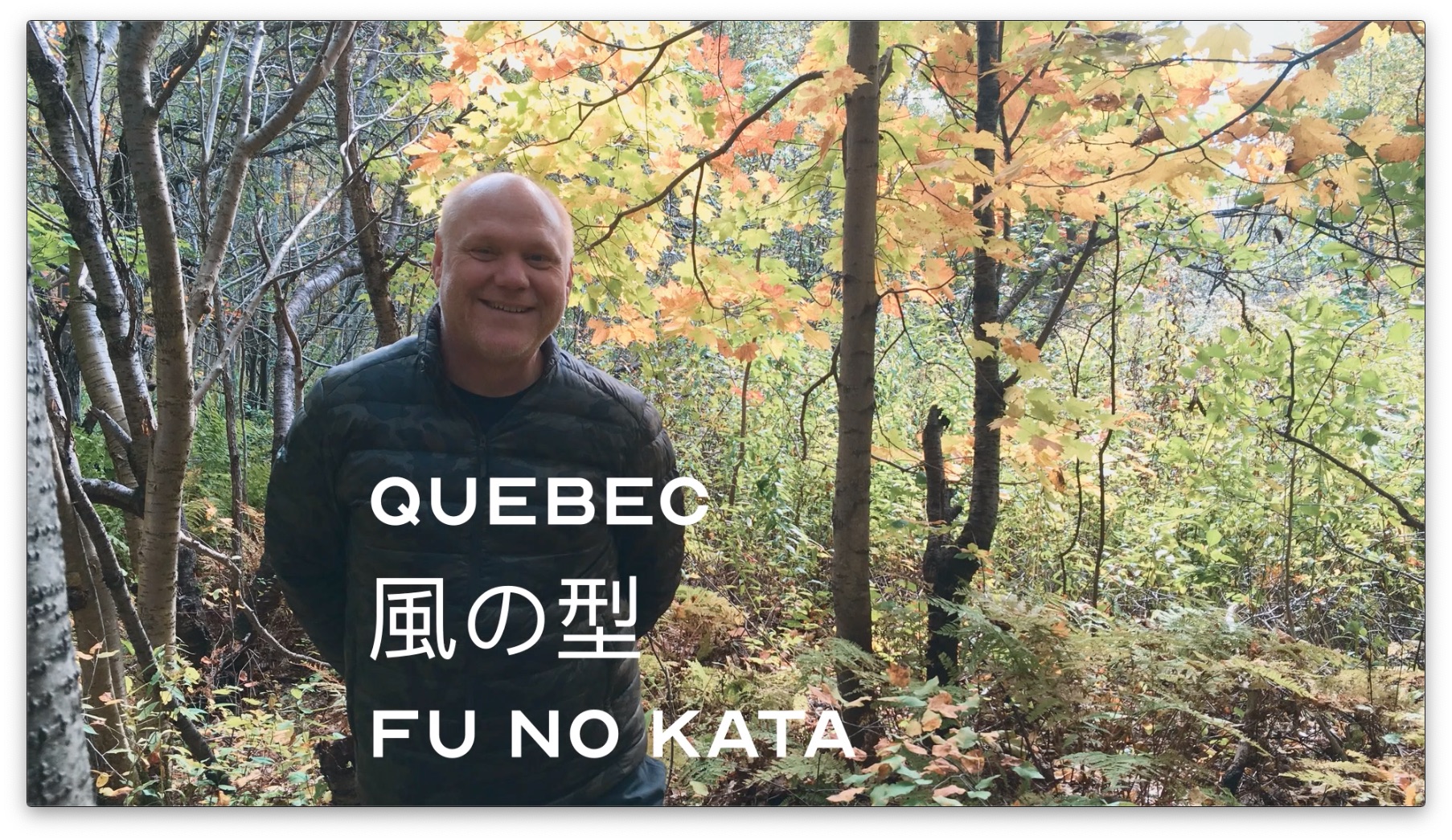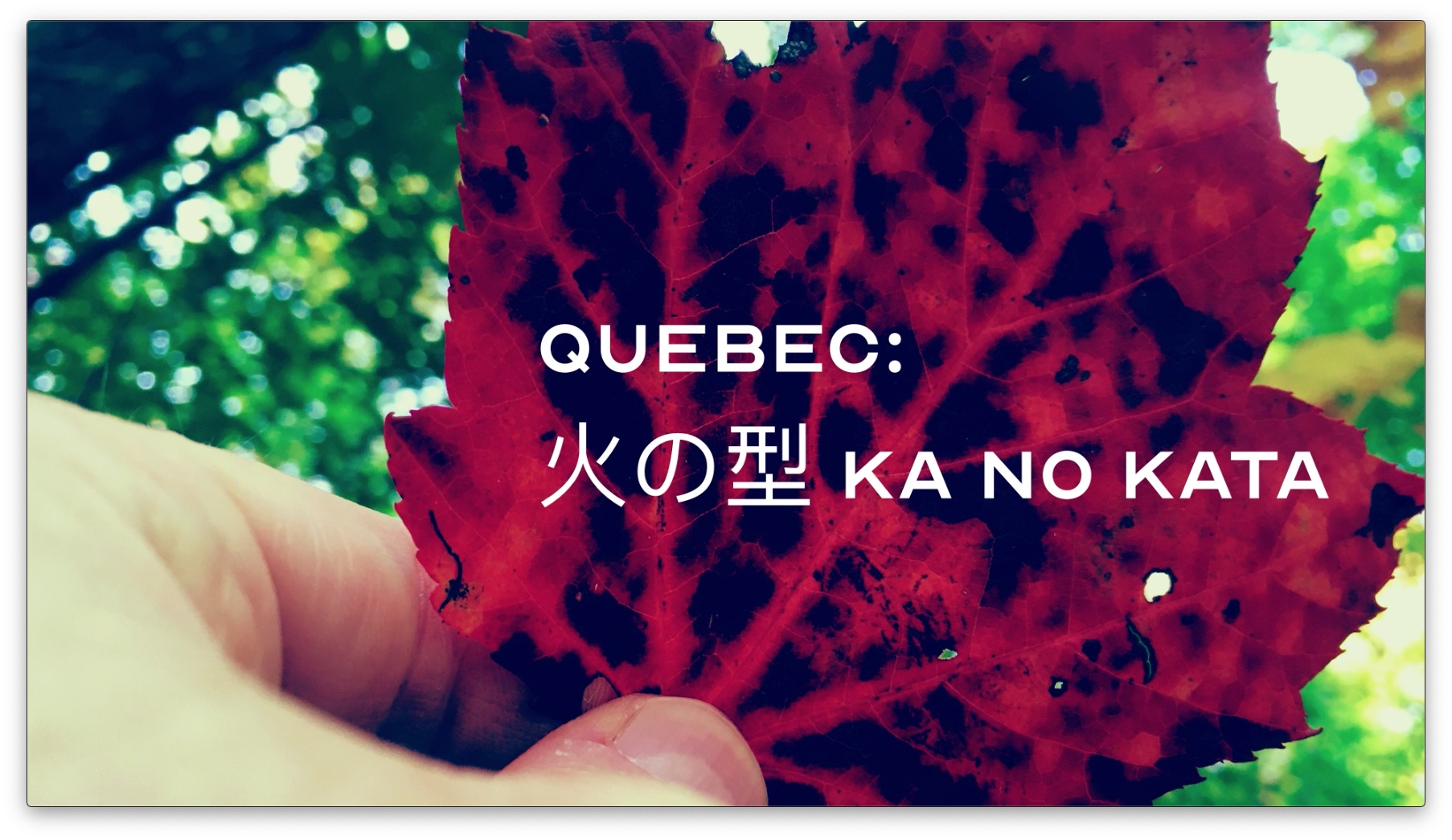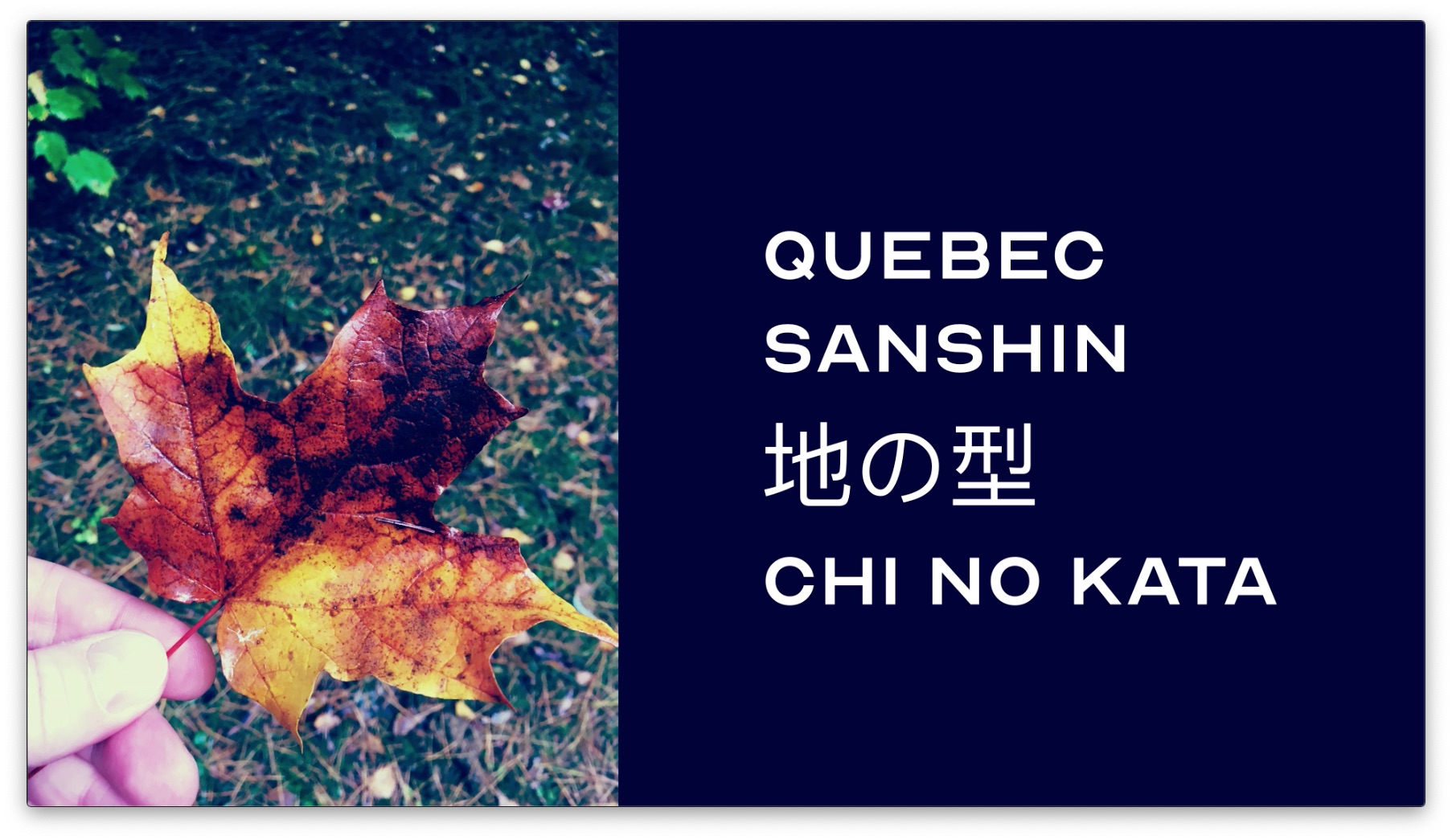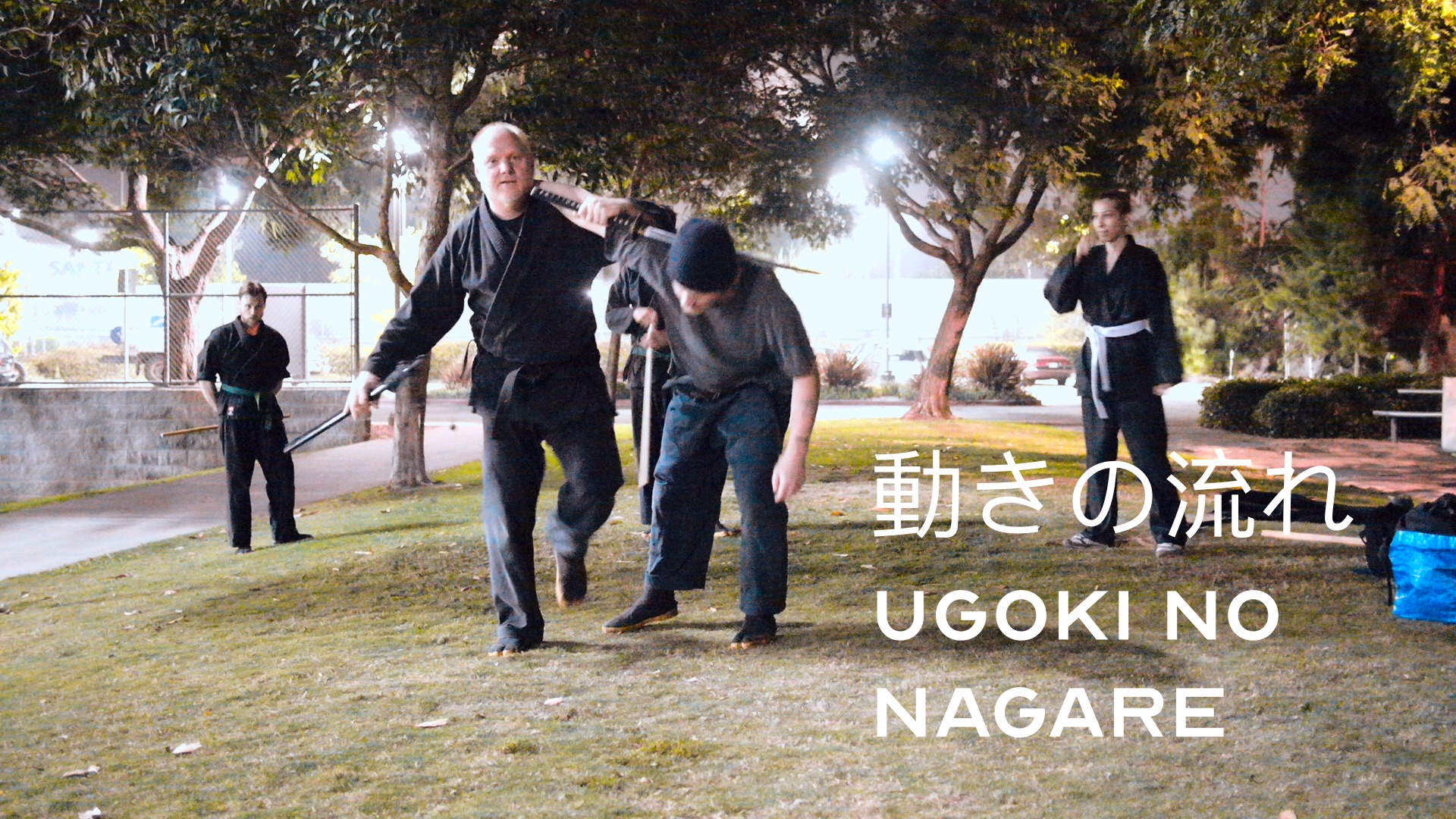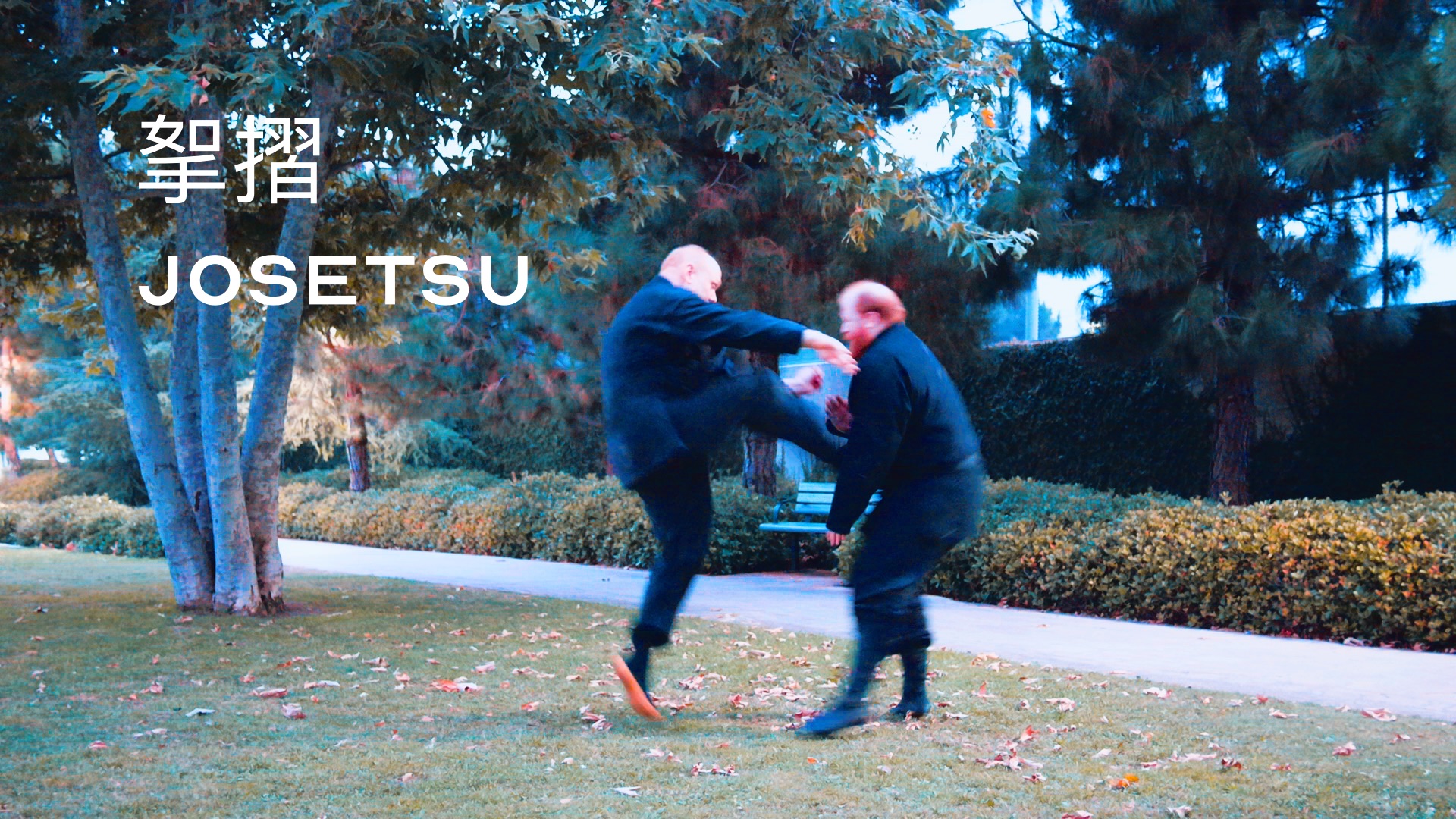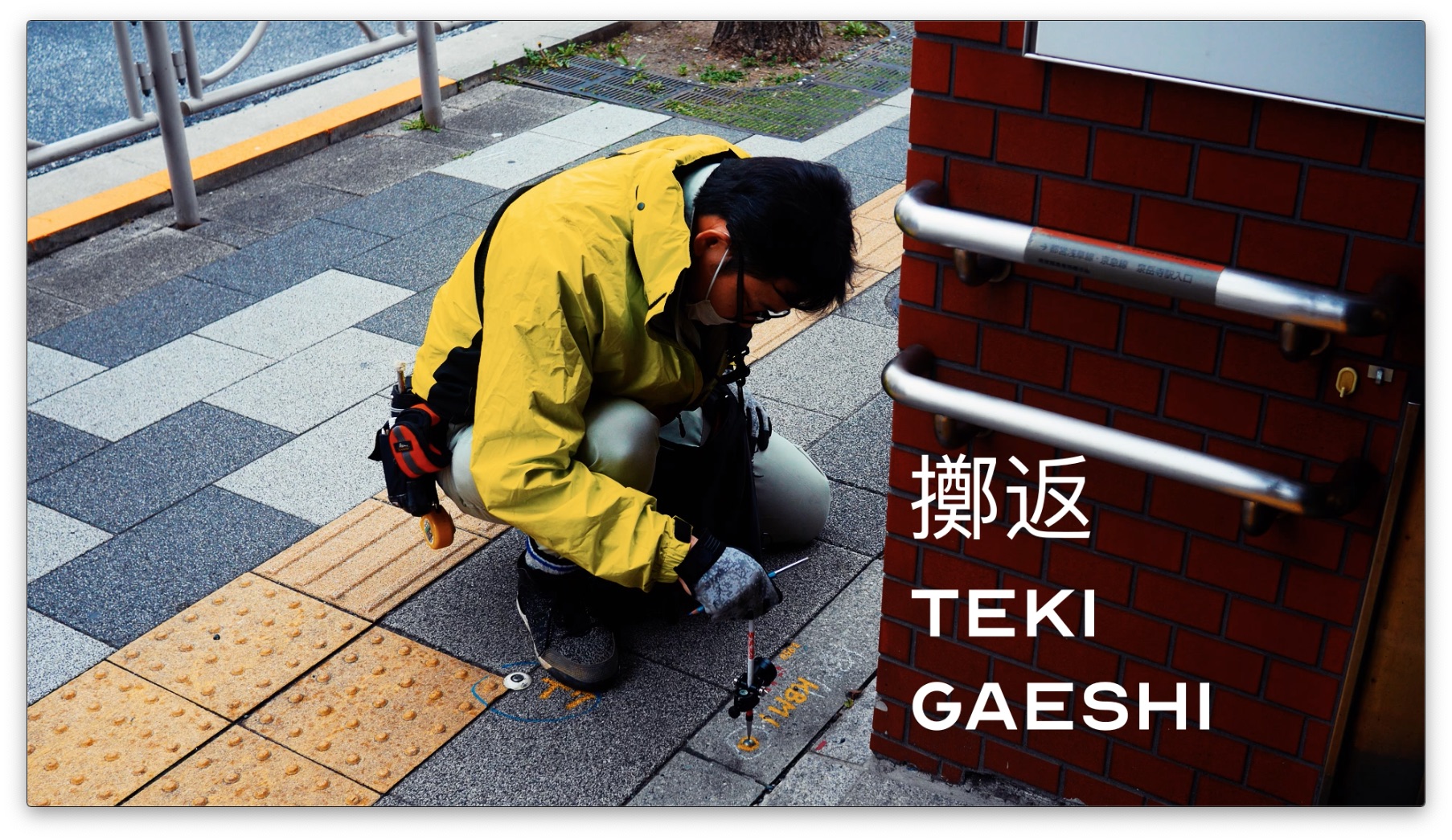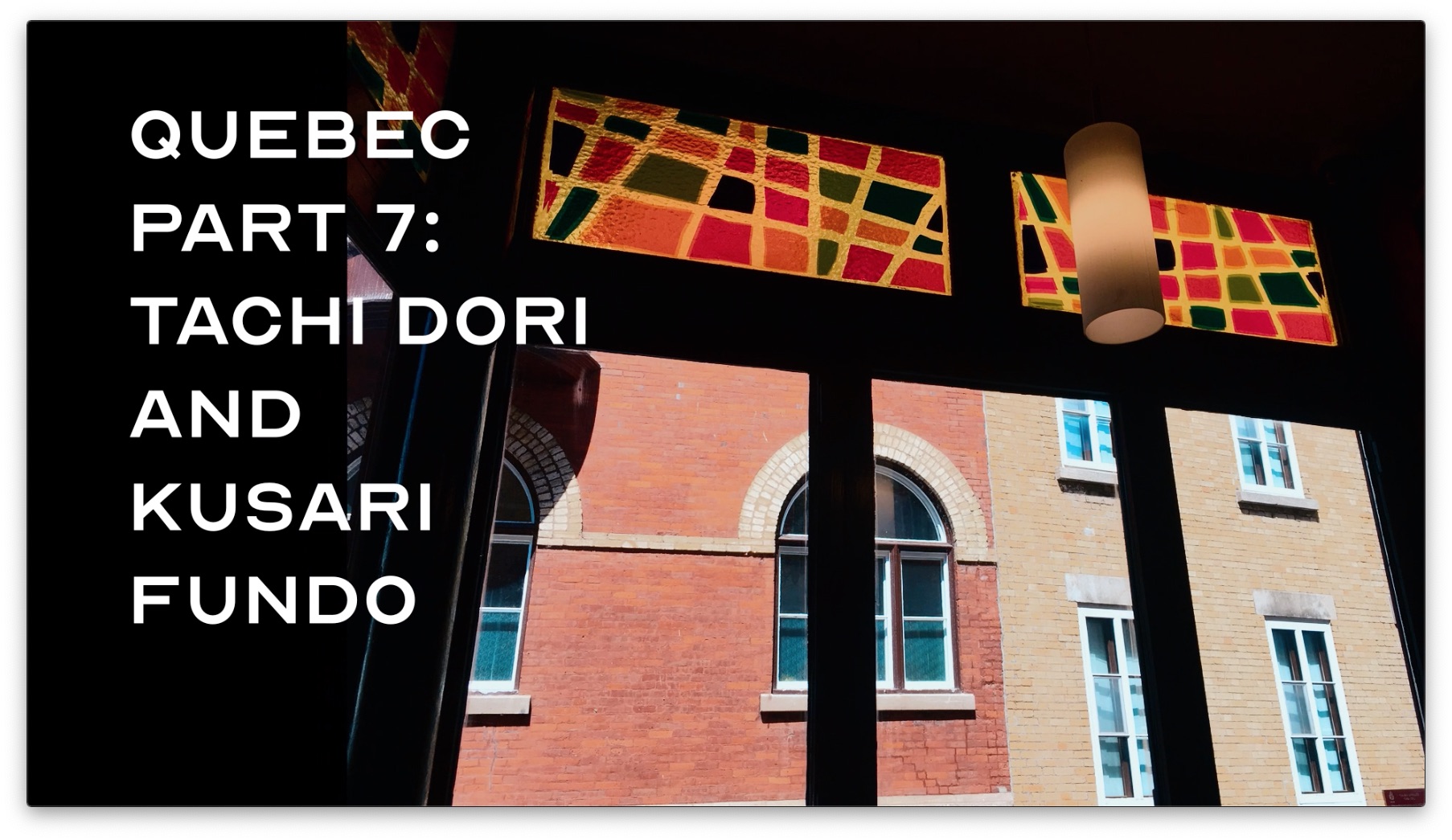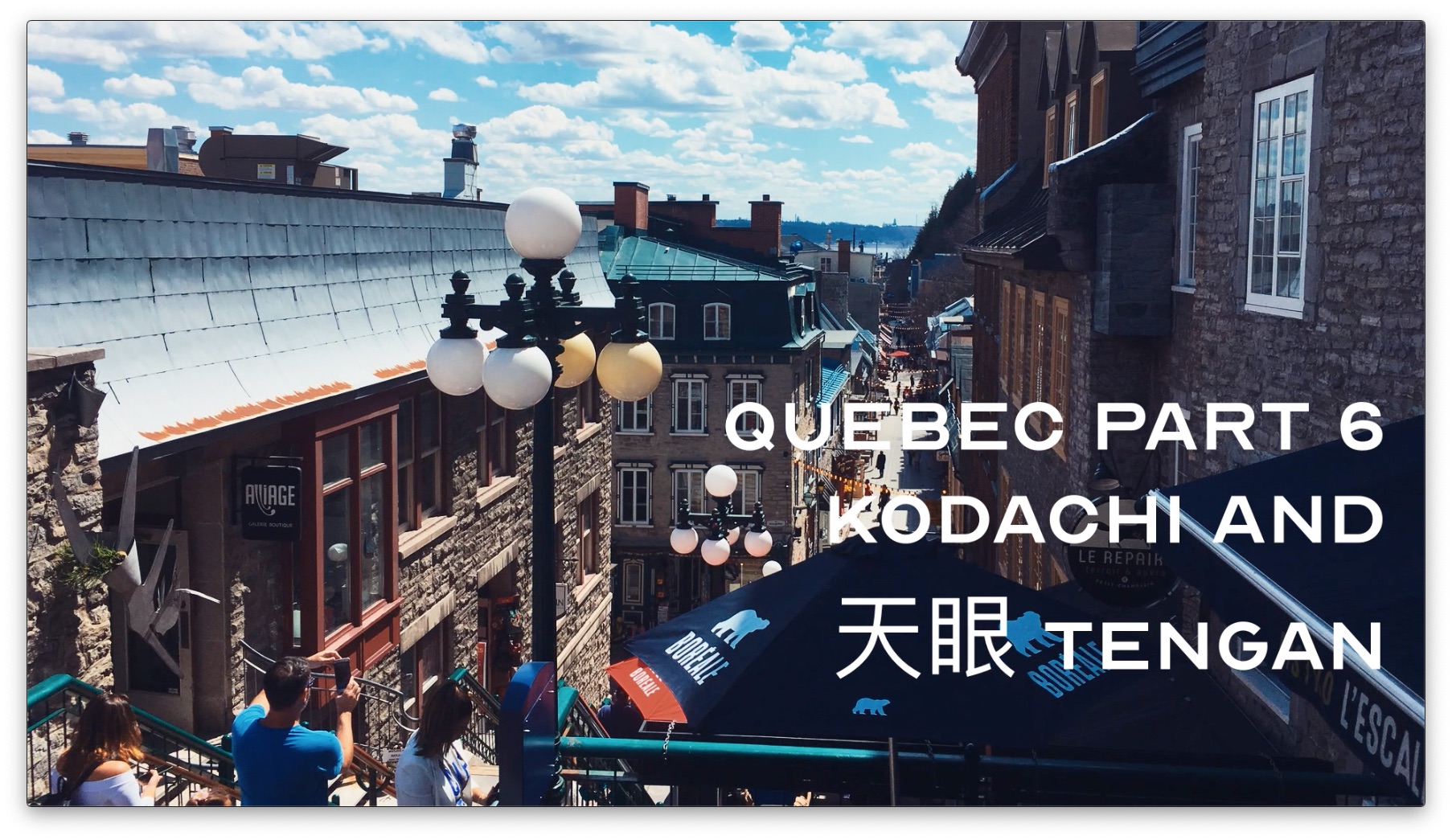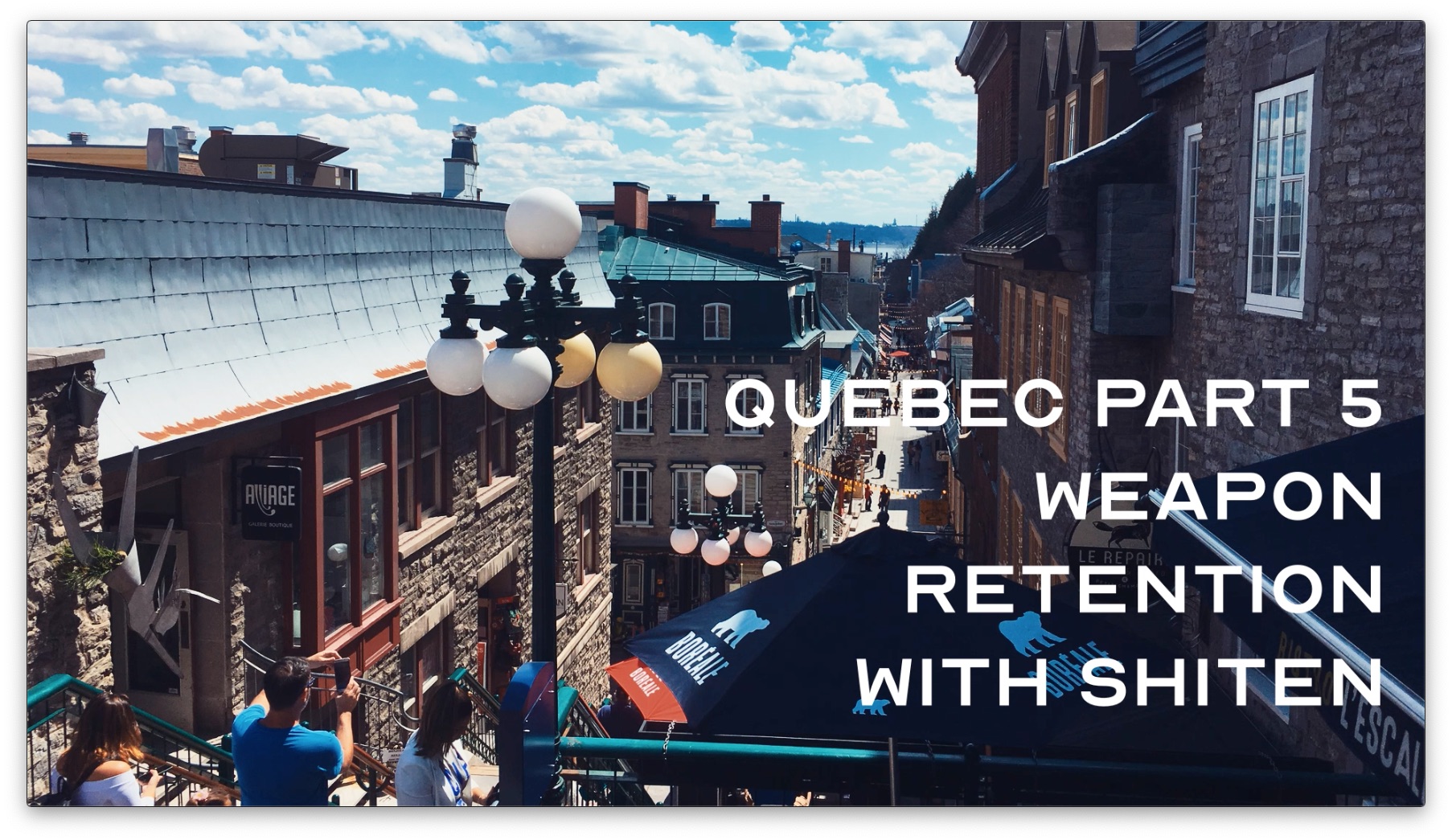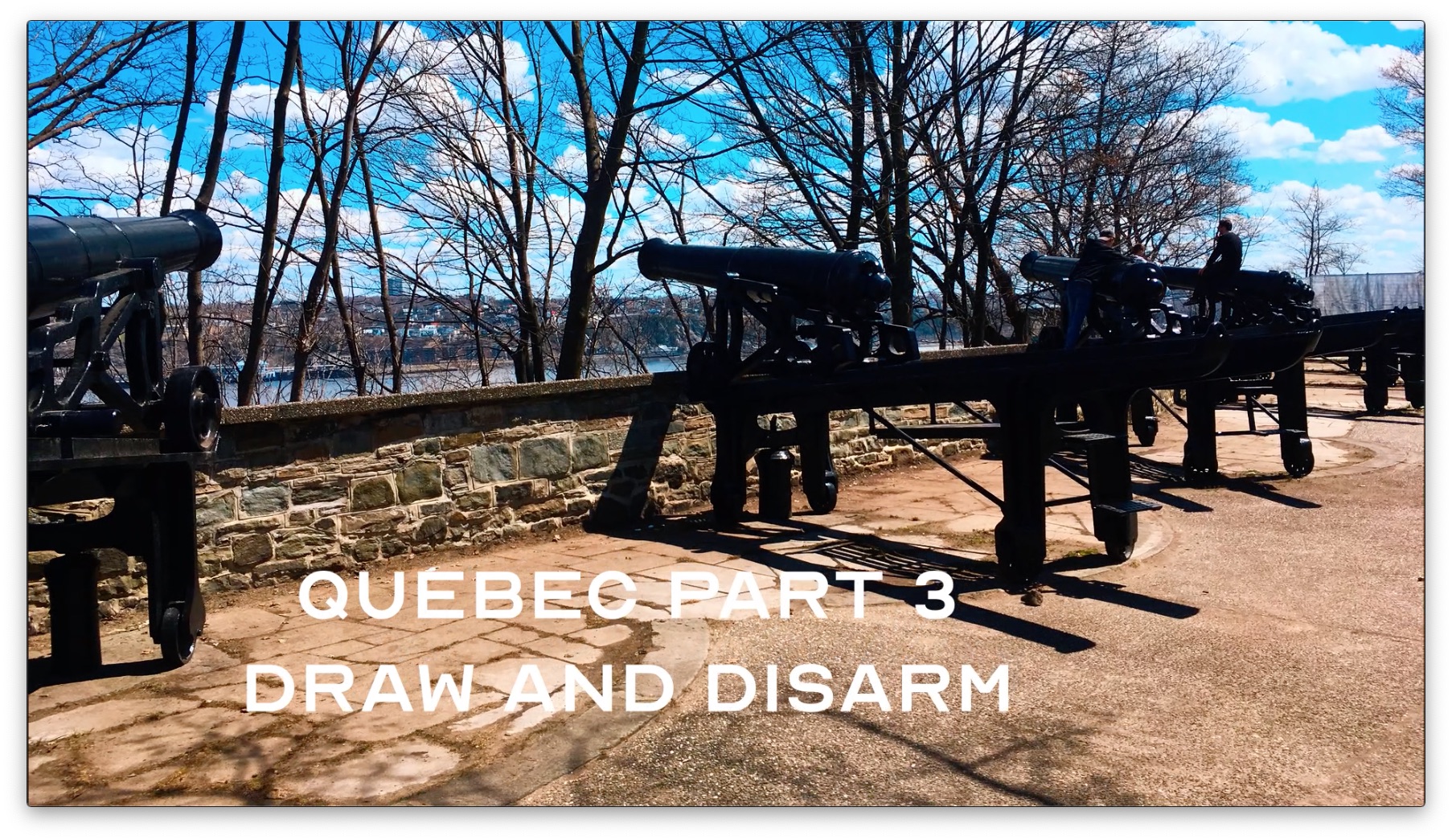Bujinkan 風の型 Fu No Kata in Québec
my Bujinkan video exploring 風の型 Fu No Kata. We began with 初心五型 Shoshin Gokei. Then we moved quickly to 五行の型 gogyō no kata.
Your gedan uke opens up a vacuum. Then the air of your strike rushes in to fill it. Hatsumi Sensei enters with his whole body, the elbow connected to his hip.
I showed the shiho variations. Here as a breeze from the east, your boshi serves like a 風見 kazami or weather vane directing the attack. If he tries to evade the wind of your strike, it envelops him and carries him along. This type of directional shift is really strong during the 裏技 ura waza.
Bujinkan 火の型 Ka No Kata in Québec
my Bujinkan video exploring 火の型 ka no kata. We began with 初心五型 Shoshin Gokei. Then we moved quickly to 五行の型 gogyō no kata.
I focused on three ranges: driving through the target; holding ground; and retreating. My opponents were surprised at how the strike was hidden. It is launched from the hip, not the shoulder as many teachers show it.
With the 裏技 ura waza, you are already at close range. This creates opportunities for 大内刈 Ōuchi gari or 内掛 uchigake during the 手刀 shutō. That throw can arise from hicho.
Bujinkan 水の型 Sui No Kata in Québec
Bujinkan video exploring 水の型 sui no kata. We began with 初心五型 Shoshin Gokei. Back in the 1980s to the ’90s Hatsumi Sensei tried to correct us on the proper form for this kata. Unfortunately, too many teachers kept their eyes closed and continued to do and teach another form. Even today, most teachers continue with this variation. So I showed the one I learned from Soke.
Bujinkan 地の型 Chi No Kata in Québec
Bernard invited me back to Québec to share some more training. I began the first day with 三心の型 Sanshin no kata. First up was 地の型 Chi No Kata.
When we study Sansin we begin with 初心五型 Shoshin Gokei. I showed this along with the ura waza. And we reviewed the 四方 shiho variations.
Bujinkan Theme of 動きの流れ Ugoki No Nagare
with the Bujinkan theme of 動きの流れ ugoki no nagare, within the flow of movement the weapon transforms. In fact sometimes we release the saya or even propel it into the kukan as a projectile weapon or as metsubushi. Float the saya out into the kukan to hold or control the space for you.
Bujinkan Kata 挐摺 Josetsu
my Bujinkan video exploring the Bujinkan kata 挐摺 Josetsu. We warmed up with 足躍拳 Sokuyaku ken transitioning to koho kaiten. Then ushiro geri to zenpo kaiten.
I began class with 挐摺 Josetsu. This begins with strike to the kyusho 十字路 jūjiro. Followed by a swift kick to 五輪 gorin.
But the real secret to success with this lies in what Hatsumi Sensei calls 三 拍子 sanbyoushi. In music and dance this is a triple time or triple measure. But it also is connected to the triple timing of sanshin. With this rhythm the adversary is caught and the kukan expands to create space for you to live.
Sanbyoushi makes you a triple threat. You threaten with 虚実 kyojitsu, then hit him with the kick. This will cause a collapse.
I finished by having the opponent attack into that sanbyoushi rhythm. We use this 繋がり tsunagari or connection to keep our attack dynamic. This is how you move the enemy without strength.
Bujinkan Kata 擲返 Tekigaeshi a Striking Answer
I began our Bujinkan class with 擲返 Tekigaeshi. In this form your defense is an attack. This attack to 脇壷 wakitsubo loads the opponent’s balance so you may knock him over with your kick.
I shared details about a class I had in Japan with Hatsumi Sensei. He told us to 空気にするで Kuki ni tsurude, or make the opponent into air. You make his attack empty, then float him up in the space.
Québec Bujinkan Tachi Dori And Kusari Fundo
We began with the 無刀捕 Mutōdori of 太刀捕 Tachi Dori. I taught two methods that I learned from Hatsumi Sensei in Japan. These are done by feel rather than looking for the sword. I explained some small details about 不動明王の目 Fudōmyōō no me like 天地眼 tenchigan. I added the 鎖分銅 kusarifundō to trap the Tachi. The true skill of Bujinkan students is often revealed with their handling of flexible weapons. I finished by sharing some critical details on how to do 中振 nakafuri with the kusarifundō. It becomes infinite like happō.
Québec Bujinkan Kodachi Kihon And 天眼 Tengan
We began by creating structure with our kamae, then dropping away in the kukan. Next I explained Hatsumi Sensei’s idea of あも一寸の玉 虫 amo issun no tama mushi, this is a gokui from 高木揚心流 Takagi Yoshin Ryū. We moved into some secret draws and 小太刀 kodachi kihon that I studied with Soke. These come from the 十方折衝 juppo sessho. Then we wrapped up with a high level strategy called 天眼 Tengan. This came directly from Hatsumi Sensei during my recent Japan trip.
Québec Bujinkan Weapon Retention With 支点 Shiten
Part Five of my Québec Bujinkan Seminar. We began with hanbo weapon retention from 無念無想の構 munen muso no kamae. The basic forms of this apply the principles of 手解 tehodoki. Then it becomes more advanced using quality of 支点 shiten that I have learned with Soke. The initial grab provides a place of connection that can become a fulcrum. This captures all of the opponent’s power and focuses it down to one point. This creates some powerful throws while using no strength or force. We did variations from 型破の構 kata yaburi no kamae that drop one side or the other, or even twist about the center.
Québec Bujinkan Shinbo And Kyusho
Part Four of my Québec Bujinkan Seminar. We began in 音無し之構 otonashi no kamae with the hanbo. This led into an examination of the principle of 辛抱一貫 Shinbo Ikkan that I learned from Hatsumi Sensei in Japan. Then I continued with 半棒術 hanbōjutsu using 挟み捕り hasami dori. I also shared the Bujinkan Kuden of kirigami as it applies to kyusho.
Québec Bujinkan Draw And Disarm
Part Three of my Québec Bujinkan Seminar. First I show how to shift the kukan to draw your knife or take the attacker’s knife. Next I demonstrated how to precisely target kyusho with any weapon. Then I shared details about 平一文字の構 Hira Ichimonji no Kamae. I showed how to use 六法の構 roppou no kamae which naturally includes 鷹の舞 taka no mai. I finished the training with knife disarms that I studied with Hatsumi Sensei in Japan.
